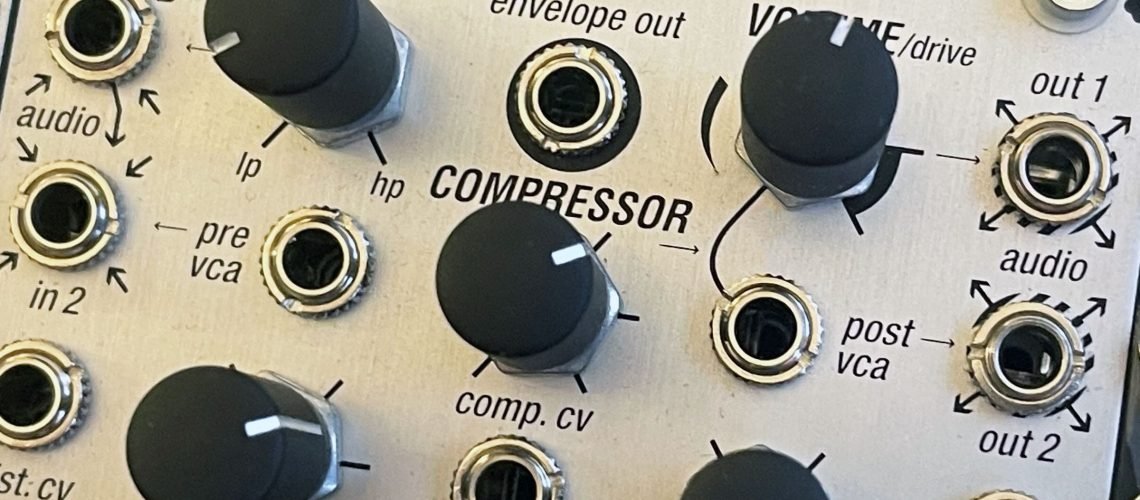The multi-effects module field is packed with choices. But Ghost stands out for its combination of dynamic, spatial, time, and distortion effects plus an easy-access filter. It’s a greatest-hits-plus of endorphin.es’ modules packed into 16HP – musical and playable, whether you want to be surgically precise or brutally dirty.
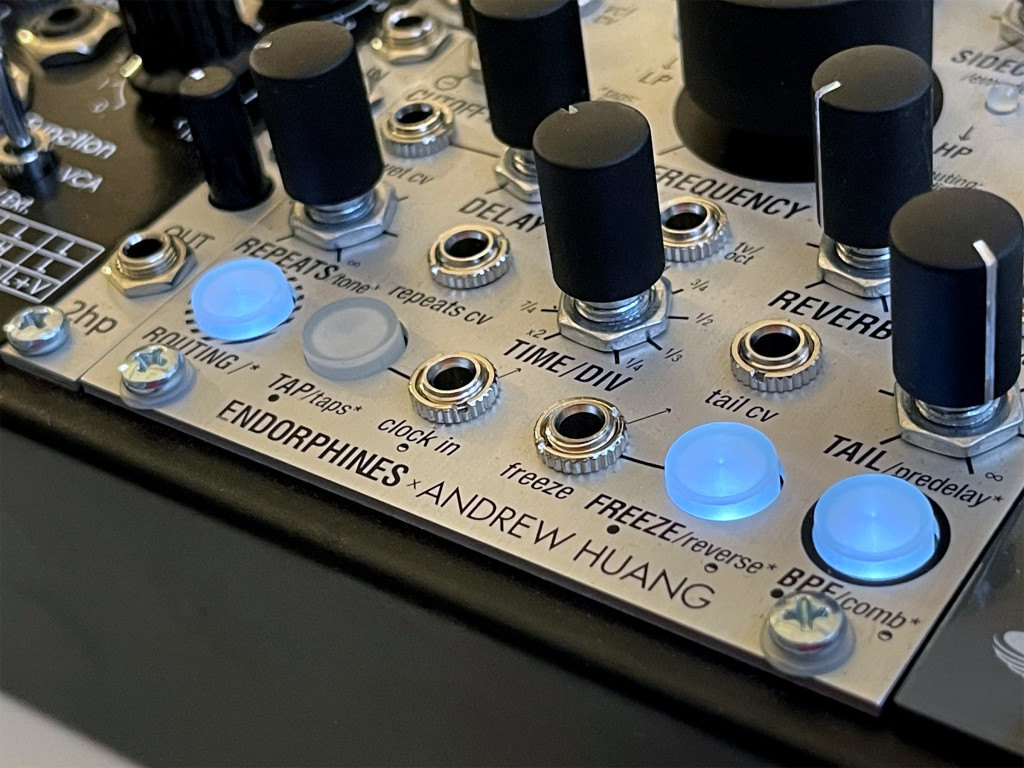
Ghost design collaboration
You definitely won’t miss that Ghost is a collaboration with musician and online personality Andrew Huang – his name is right on the faceplate. But that relationship goes beyond just some videos or a name and into the design. We talked with lead Endorphin.es engineer Andreas Zhukovsky, who tells us that the original concept began as Andrew’s idea. That concept was translated into a sketch that was first affectionately dubbed “Ghost of LeeRoy” (look that one up) before it was shortened to the present name.
Maybe part of why Ghost feels so versatile is that it’s been built to satisfy multiple artists. At the same time, Andreas was also starting to play with these processing blocks “because I wanted to make a techno low-frequency rumble generator for Julia Bondar’s case.” (Julia Bondar is also an integral part of Endorphin.es, plus an active artist – aside from catching her set recently at Superbooth, we’ve covered her live sets here on CDM.)
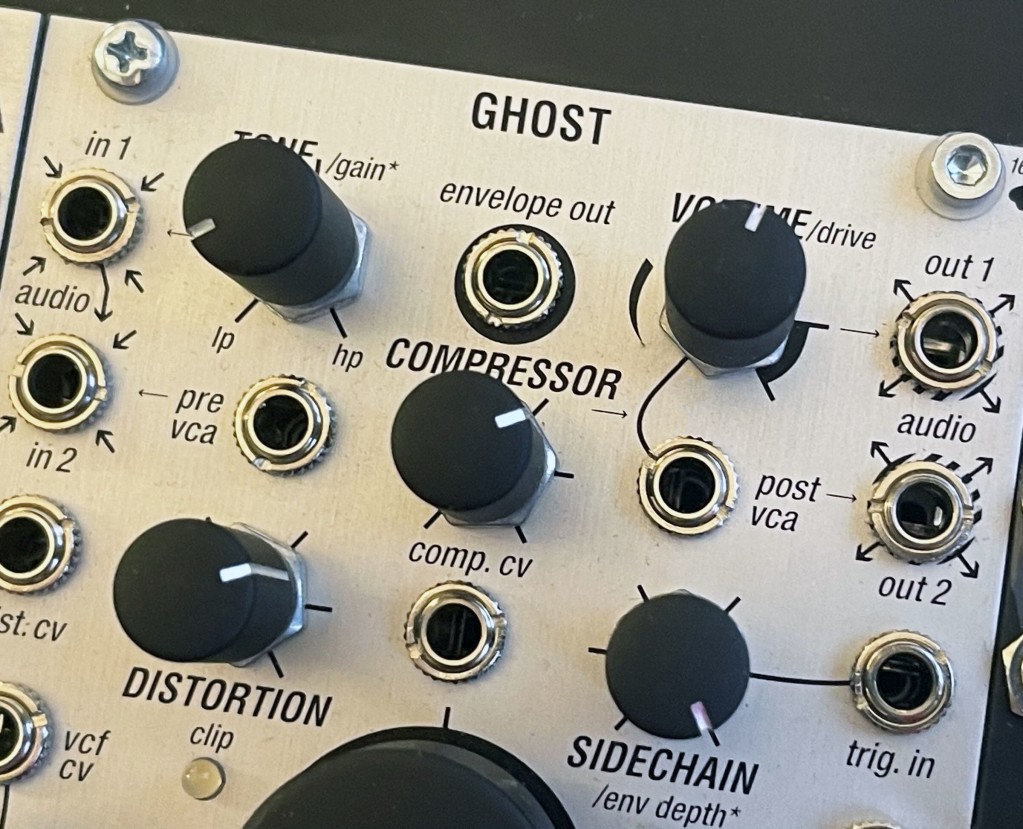
“The beauty of the collaboration is that starting with a few of Andrew’s brilliant ideas, like switchable routing and proper layout, we managed to create a universal sound designer tool,” says Andreas. “It’s got a really wide range, from techno to experimental to ambient – and Julia can still make her rumble with it.”
To that, add a series of firmware updates cramming in more features and carefully tweaking usability – enough so that I had to revise parts of this review – and you have in this month’s V3 Ghost a mature, deep instrument. There are lots of extra features, but they’re rarely further away than combining two buttons or button+parameter. There’s no menu diving and fairly easy-to-grok mode switching for a module that does this much.
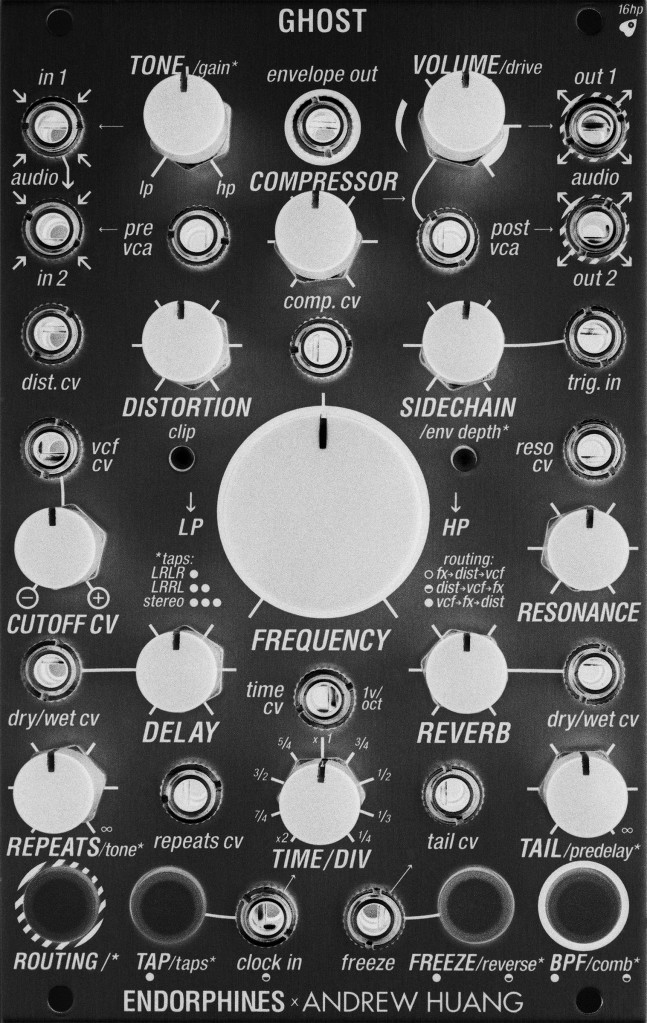
Ghost Tour
Ghost isn’t one tool. It’s not just an end-of-chain device (though it can be). It’s a complete multi-effects processor with switchable routings; it’s even grown with the latest feature update. By feature:
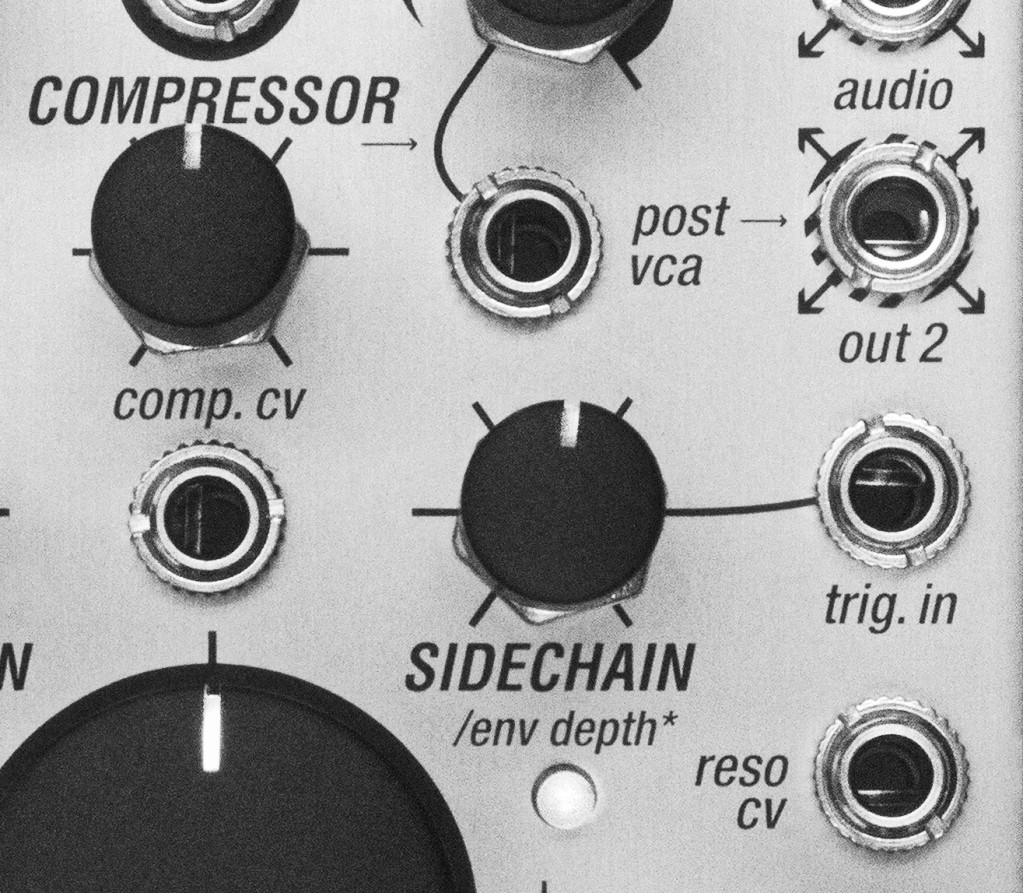
Dynamics processing. A one-band peak stereo COMPRESSOR is simplified here to one-knob operation – crank it up for snappy drums, leave it centered for pads. There’s also final-stage sidechain ducking compression – you just feed a trigger into the trig. in, then set release time with COMPRESSOR.
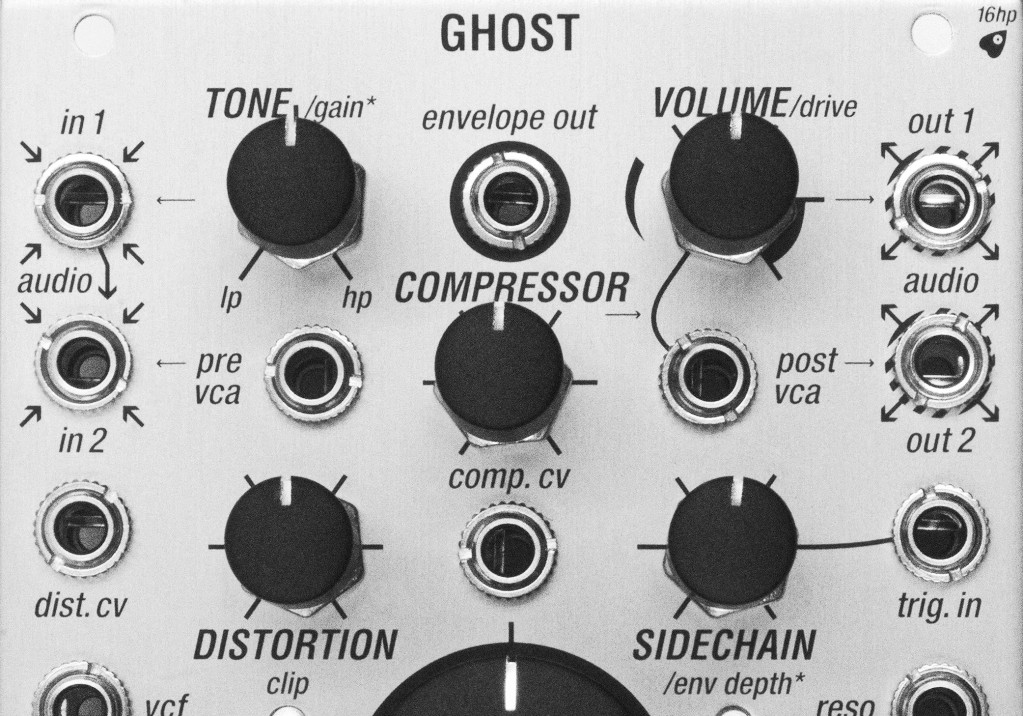
Distortion and color / gain. There’s not just one, but three separate distortions to apply – each with their own character (which comes out especially as you combine them).
First, TONE/GAIN is brilliant, even though it’s maybe the least-obvious control. It’s a multi-function knob that works as 6dB/oct TILT EQ. Center it for no effect. Hold ROUTING and it becomes a secondary gain. Cranked up, you get clipping gain, and you can overdrive the compressor and filter.
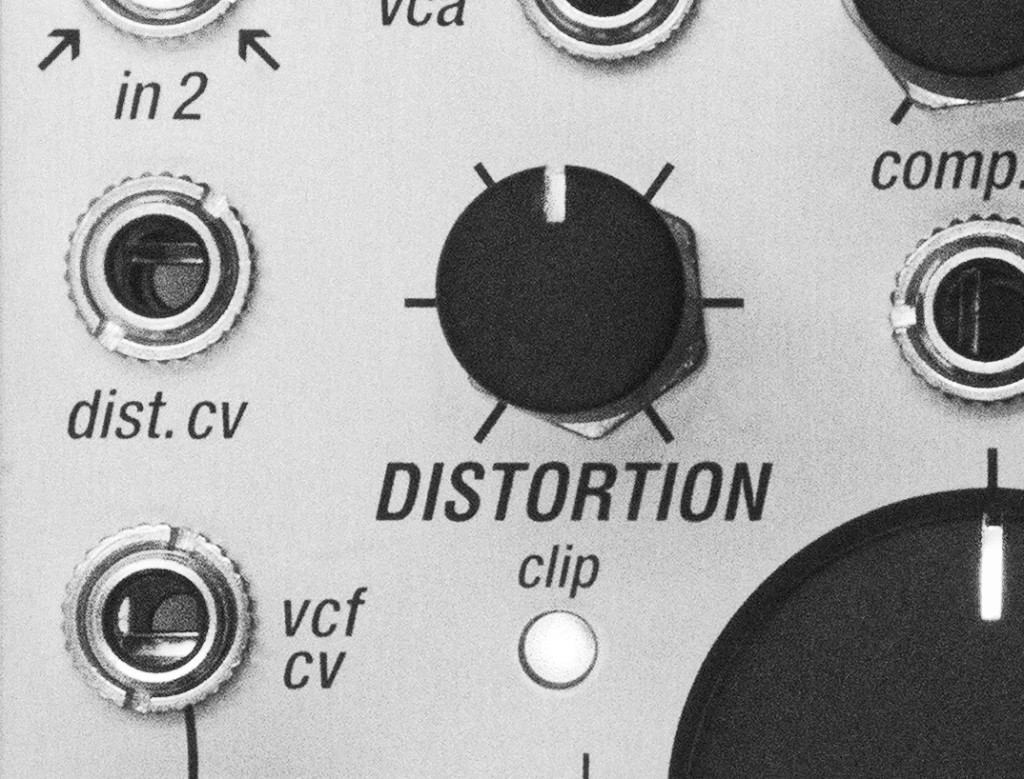
DISTORTION is an overdrive, adapted from Endorpin.es’ Milky Way module but with improvements (more maximum gain, volume compensation, double the oversampling).
GAIN is a drive control, but you get really crunchy saturation in the last bit of knob – as marked on the panel.

Filter. There are three filter modes – bipolar lo-pass / high-pass, bandpass, and an alternative comb filter with resonator, with CV control of cutoff and resonance.
In the default mode, you just turn down the filter knob for loss-pass or up for high-pass – a convenient, DJ-style control. Tap the BPF button for the bandpass mode. Hold ROUTING + bandpass for the comb filter mode.
If you’re looking for subtlety here, this is not. Think aggressive filtering that really screams with resonance cranked up. In fact, as it’s sitting next to me, you get enough noise from the gain stage that I can turn up RESONANCE + GAIN + DISTORTION and I can use it as a very dirty oscillator.
Also, be aware that in the default mode, the filter will close completely. As of V3, a previous ‘dead range’ toward the fully counter-clockwise position (or clockwise for high-pass) has been nicely smoothed out. You will still hear some stepping, especially with resonance turned up. But that’s not necessarily a bad thing – I started playing little melodies with the thing, which sounds wild with distortion. There are ladder filters in Eurorack already, anyway. This is grungy, out there, lo-fi digital filtering and I like it just the way it is.
The resonant band-pass filter is a whole additional color and likely an overlooked feature of this module. In that mode, RESONANCE actually controls bandwidth. (This takes some dialing-in based on source material.)
Hidden extras: ROUTING+DISTORTION for bit crusher effect, ROUTING+RESONANCE for sample rate reduction, each processed post-filter. (V3 firmware) And you already know I love the combination of filters and bitcrush/downsampling – as I just gushed about the Zen Delay and its associated plug-in.
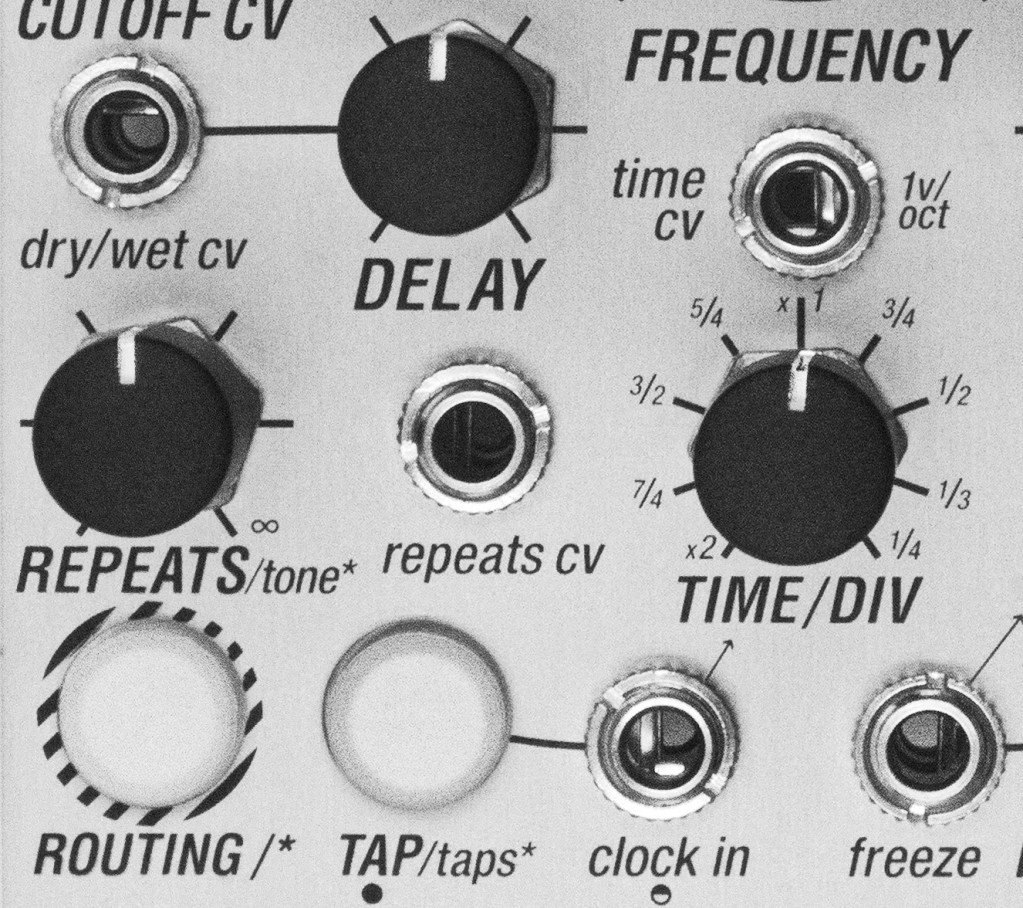
Delay. You get clockable delay with feedback and wet/dry – plus a bunch of “hidden” features. The delay self-oscillates at audio rate frequencies, includes onboard VCAs, and the time control is 1v/octave – so you can use it for Karplus-Strong physical models. There’s also a tap tempo. Plus you can use routing options for spatial effects:
LRLR – hard-pan taps 1+3 left / 2+4 right
LRRL – 1+4 left / 2_3 right
STEREO: left and right inputs tap to left and right outputs
The first two modes are summed, which also means you can use these mono-to-stereo; “stereo” mode requires a mono input.
Hidden extras: ROUTING + REPEATS controls a tilt EQ applied to the repetitions. Try this with and without clocked time division. It gets a little confusing because of the take-up of this knob as it does double-duty, so this is best set before you play. But at about 9-o-clock, you get tape/dubby sounds. 2-o-clock gives you sparkling, higher-pitched delays.

Reverb. The reverb here is a derivative of endorphin.es’ Milky Way and Grand Terminal. Think basically a classic, clean hall reverb a subtle, shimmer effect added. In other words, it’s a shimmer-y hall – but neither too vanilla nor too over-the-top. With the tail and wet/dry controls, you can dial it in effectively for techno, ambient, experimental, whatever.
Hidden extras: ROUTING + TAIL knob controls pre-delay. There’s also external CV control (summed) for tail. And there’s one-tap FREEZE, plus ROUTING + FREEZE for reversed reverb. Also hidden: with reverse enabled, FREEZE then freezes the delay.
FREEZE now also fully mutes the input signal, so the effect is more pronounced. (V3 firmware)
Shimmer is also “hidden” in the reverb – it’s a clean hall reverb from the minimum up to the 12-o-clock dry/wet position, then adds shimmer above 12-o-clock to fully clockwise (the “ghostly” bit).
Pre-delay results can be really gorgeous and unexpected; I’ve already waxed poetic about why I love that sort of thing in the review of Sinvibes’ Vague.
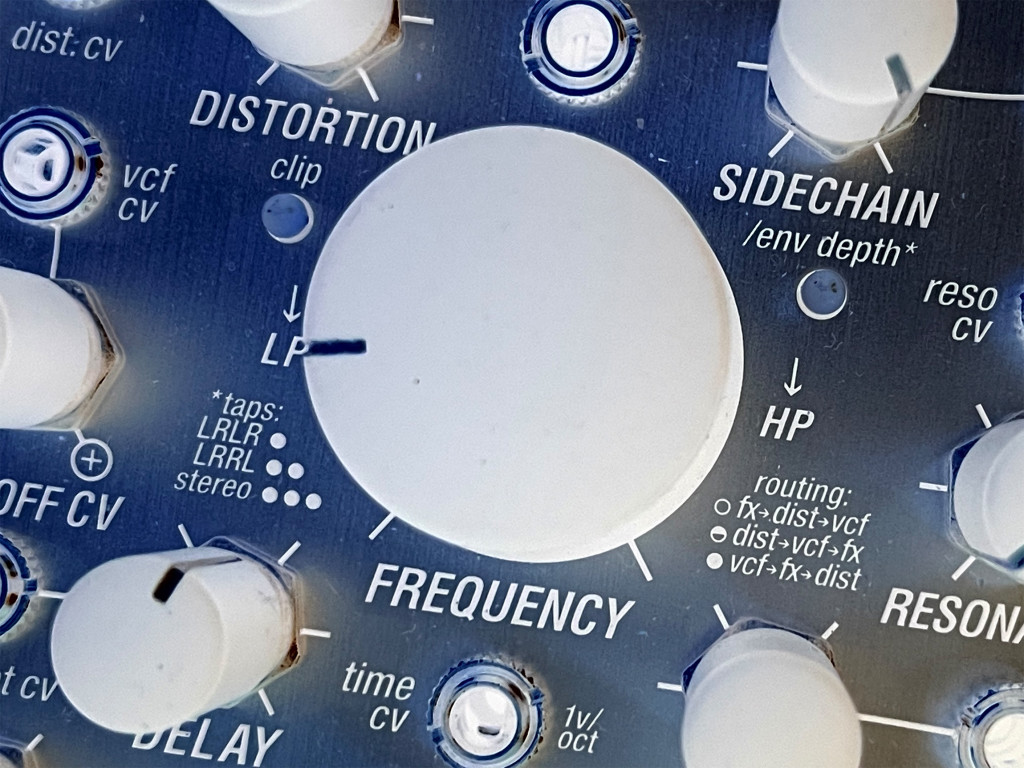
Features and routing
You can choose three combinations of routing for the blocks:
FX – DISTORTION – VCF
DISTORTION – VCF – FX
VCF – FX – DISTORTION
Obviously, you get maximum distortion in the third. The second mode is the cleanest, and it’s a bit surprising it’s not the default – except remember that “rumble” business? The default is great for rumbling results.
And because those are accessed via a single-push button, there’s also plenty of room for trial-and-error with different signal routings — something you might not get in the same way in software. Dialing in some distortion and reverse reverb and the comb filter, then experimenting with routing, for instance, can reveal some unexpected results.
Let’s talk layout, because this has turned out to be my favorite feature. I know it may be off-putting for some users seeing this many knobs scattered across the panel, plus that massive filter knob, but there’s some method to the madness.
The oversized filter knob is great live. It’s stupidly ease to grab, and the lighter resistance works well here just as it does on a crossfader. You can just wail on the thing. All the other knobs organized radially are equally easy to find with muscle memory, without having to cram your fingers. Each parameter also has its CV input jack next to it, which also aids live patching. So if I understand correctly that this layout came from Andrew, there’s the advantage of involving musicians and not just engineers.
With so much CV control – plus the trigger for compression – it’s also worth not only using the clock input on the delay, but also sending modulation to the other inputs from an external synced LFO.
There are also “clear” functions – turn down delay dry wet + repeats to clear the delay, freeze (or switch to or from reverb) to clear delay/reverb freeze buffer, or clear all the module’s parameters by holding down all the buttons for three seconds. (It’s the ctrl-alt-del of module parameters!)
Because of the tuning of the delay and the availability of a VCA, Ghost is a complete Karplus-Strong module when you want it to be:
Oh yeah, and about Julia’s rumble – here’s how it works:
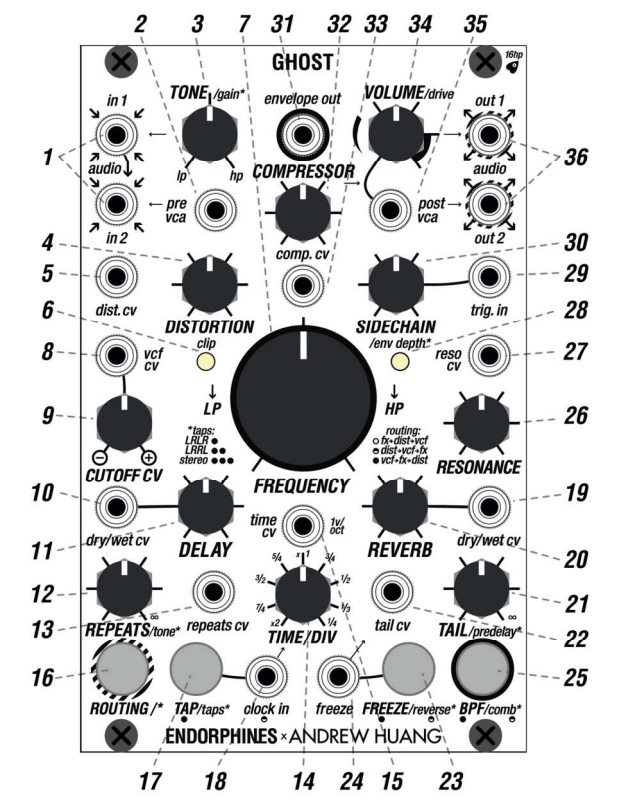
Engineering behind the scenes
I really enjoyed getting to talk to Andreas about how this design came about. And he went deep, in case you want to go there with us.
And yes, part of why I describe this as a greatest-hits module is that really describes it well – though as Andreas is quick to note, these components are combined in new musical forms and expanded in capabilities. The lineage:
Most of the processing blocks are heavily based on math. And we basically already had them from our previous products like Grand Terminal/Milky Way/Squawk (zero-delay feedback filters, effects, distortion), Golden Master (compressors, saturators), Cockpit (side-chain ducking).
To me it’s great to go block by block with the engineer here, not only because I’m interested in the engineering side but also because this says a lot about how to use this musically. Here’s Andreas:
Basically GHOST has three distortion stages. All three are parabolic saturators or so-called Lagrangian polynomial that gives harmonics proportional to their degree – the best that we can get in terms of reducing aliasing.
Input TONE/gain* is similar to the GOLDEN MASTER input gain. Increasing the gain obviously brings the levels of the noise and aliasing up but that allows us to use it creatively or on purpose – e.g. hit the compressor harder or overdrive the filter stage.
The main Distortion is our overdrive from the Milky Way with increased maximum gain and volume compensation. But since the GHOST was made on the new ARM M7 similar to for example Mutable Instruments Beads, we have more juice to increase the oversampling twice. Milky Way is based on ARM Cortex M4 which allows us to process only a single effect at a time.
The third drive stage starts to saturate after the volume knob passes the 15 o’clock range. It is actually similar to the output stage in the Milky Way or Queen of Pentacles volume output. Especially in the Queen [which is roughly inspired by 909 drum voices: 3x analog and 4x sample based] that drive worked so well and glued all the sounds together.
That’s how we recorded the jam for the Queen [of Pentacles]:
In general, the 909 is born to be paired with distortion – especially for modern techno, which is heavily based on distorted material. I believe (and know from friends’ experience), GHOST with its distortion found a place in the racks of techno producers as well.
Ghost reverbs are derivatives from the Milky Way and Grand Terminal. We have picked our cleanest-sounding hall reverb. With more RAM available we managed to have a proper pre-delay for it.
The Milky Way had a separate Shimmer reverb – basically the lightest reverb algorithm to give the majority of the computation for the pitch shifters.
Here in the GHOST we were able to put pitch shifters in the current Ghost’s hall reverb feedback loop but fade them only from 50% of the reverb dry/wet knob – that all really added a spooky character and a wider effect palette for ambient music.
With the shimmer it became easy to obtain Cortini-, Barbieri-like ambiences:
Reverse reverb was picked as the most contrary sounding to the clean hall yet it is rather useful for any whooshing or generally speaking cinematic sounds.
There are a few interesting, rather secret micro-modulations cross parameters influences we didn’t explain in the manual so far but I find them worth mentioning as we found them in their sweet-spots.
Delay repeats knob influences some amount of filter closing on its full move with the amount of Delay dry/wet knob.
More delay closes the filter a bit to prevent hard ringing on the repeats.
On the contrary, Reverb’s tail slightly opens the filter on its full move with the amount of Reverb dry/wet knob. The more tails, the brighter the filter to cut the boomy low-ends and wider the stereo image.
Resonance opening closes the filter just for a few cents and distortion engagement increases compressor action. All that created an interesting parameter interchange in the GHOST and somehow made it less static.
Conclusions
Ghost is an investment – it’s going to take up the space and invoice cost of two or three other modules. But the value here is incredible. It’s a beautiful ambient module; it’s a great techno module. It’s a Karplus-Strong module. It’s a filter. It’s multiple reverbs with freeze. It’s a complete delay. It’s a dynamics processor. It’s a tonal instrument and distortion processor.
Now, it’s great that various modules are taking on multiple functions – aided in no small part by the fact that many modules these days are small embedded computers. But unique to the Ghost, you get all of this just by holding down a button, live, or adjusting routing and/or patching. There’s no menu diving, no display, no complicated weird combinations of buttons and blinking LEDs. (Hey, I have a couple of modules I adore that … also drive me slightly bonkers. I appreciate their esoteric multiple personalities, but the Ghost is a great break.)
It’s great what Endorphin.es has done, and how much musicality they’ve gotten in tweaks and voicing to really make this into an instrument, largely thanks to feedback from Andrew and others. Just when you thought Eurorack was slowing down, Ghost is another new-generation classic. And I can’t wait to see what Endorphin.es does next.
ENDORPHIN.ES GHOST Product Page
475 USD / EUR (incl. VAT) MSRP
Available now
Version tested: firmware V3
